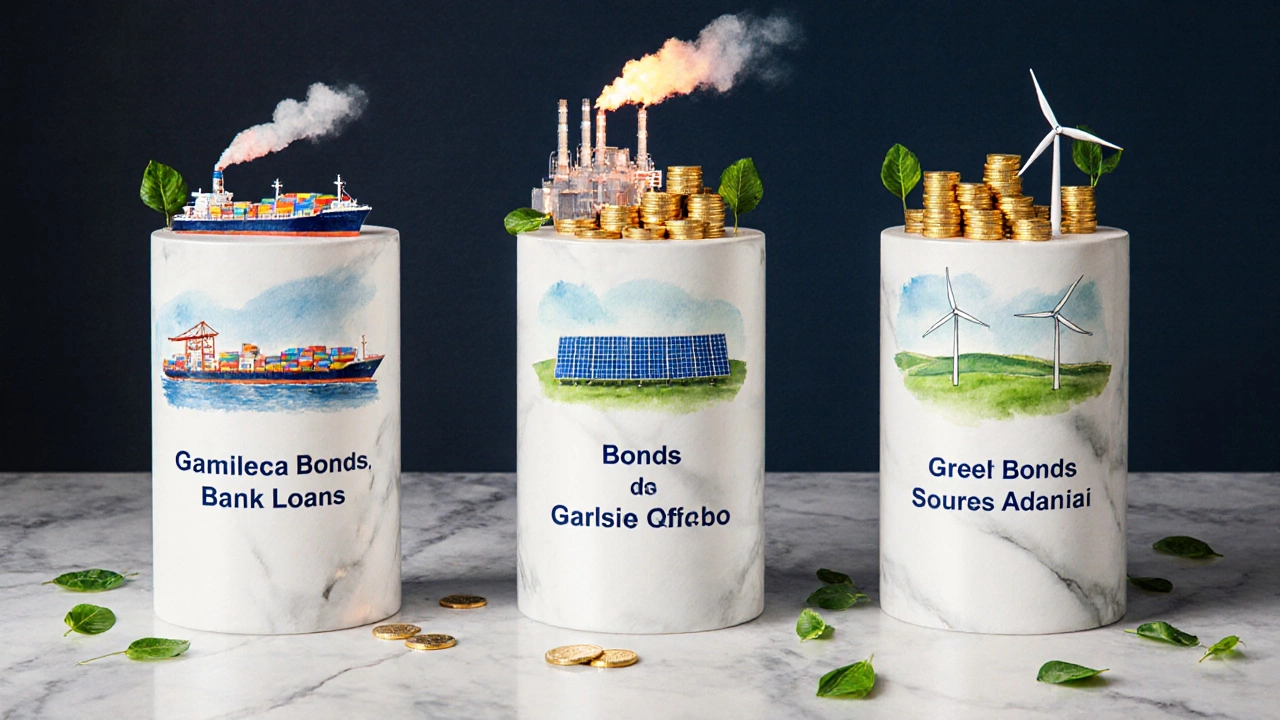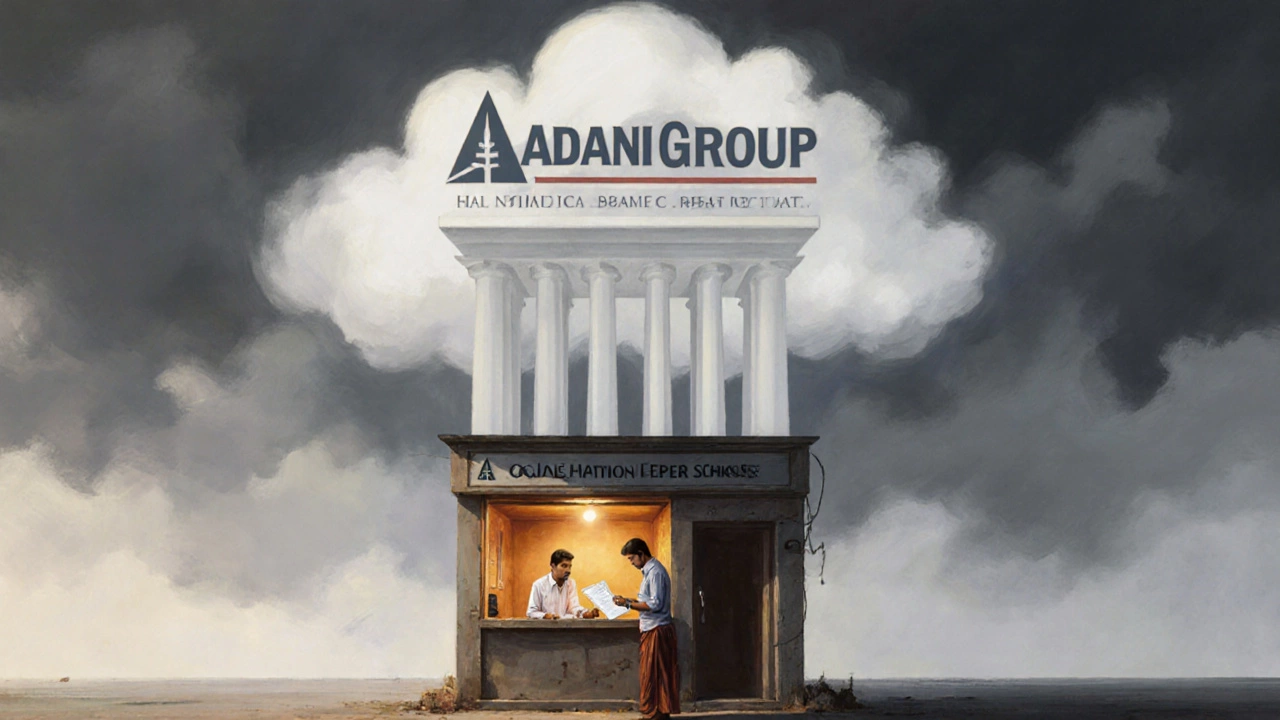
Debt-to-Equity Ratio Calculator & Comparison
Calculate your company's debt-to-equity ratio and compare it to Adani Group's ratio of 2.20. This tool helps understand how your leverage compares to industry benchmarks and what it means for business loan eligibility.
Calculate Your Ratio
Industry Benchmark Comparison
| Company | Debt-to-Equity Ratio | Latest Data |
|---|---|---|
| Adani Group | 2.20 | FY 2024-25 |
| Reliance Industries | 1.74 | FY 2024-25 |
| Tata Group | 1.24 | FY 2024-25 |
| Vedanta Ltd. | 1.70 | FY 2024-25 |
Your Result
When you hear the name Adani Group is one of India’s largest diversified conglomerates, with interests ranging from ports and power to renewable energy and data centers, the first question that often pops up is: how much debt is the group actually carrying? Investors, lenders, and even small‑business owners who watch corporate borrowing trends want a clear picture because the size of the debt can signal risk, affect credit availability, and influence the cost of business loans across the country.
Why Debt Matters for the Indian Business‑Loan Landscape
Corporate debt levels set a benchmark for banks and NBFCs when they price loans for midsized firms. If a giant like Adani is heavily leveraged, lenders may tighten criteria for new borrowers, or they might raise interest rates to hedge against sector‑wide exposure. Conversely, a well‑managed debt profile can boost confidence, leading to more aggressive loan‑offering policies.
Current Total Debt Figure for the Adani Group (as of Q3 2025)
According to the latest audited financial statements released in August 2025, the Adani Group’s consolidated debt stands at Adani debt ≈ USD $30.4 billion. That translates to roughly ₹2.55 trillion at the prevailing exchange rate (₹84 per USD). This number includes all short‑term borrowings, long‑term loans, bonds, and project‑finance obligations across its major subsidiaries.
How the Debt Is Distributed Across Major Subsidiaries
The conglomerate’s debt isn’t a single pool - it’s spread across a host of businesses, each with its own financing mix. Below is a snapshot of the biggest debt‑bearing arms as of the end of FY 2024‑25.
| Subsidiary | Total Debt | Debt Type | Latest Reporting Year |
|---|---|---|---|
| Adani Ports & SEZ Ltd. | 7.2 | Bank Loans, Bonds | FY 2024‑25 |
| Adani Power Ltd. | 5.8 | Project Finance, Term Loans | FY 2024‑25 |
| Adani Enterprises Ltd. | 4.6 | Bank Loans, Convertible Notes | FY 2024‑25 |
| Adani Green Energy Ltd. | 3.9 | Green Bonds, Syndicated Loans | FY 2024‑25 |
| Adani Total Gas Ltd. | 2.4 | Bank Loans | FY 2024‑25 |
| Adani Transmission Ltd. | 2.1 | Project Finance | FY 2024‑25 |
| Other subsidiaries (combined) | 4.4 | Various | FY 2024‑25 |
The table shows that ports, power, and the flagship holding company (Adani Enterprises) dominate the debt picture. Green Energy’s reliance on "green bonds" is a newer trend, reflecting the conglomerate’s shift toward sustainable financing.

Sources of Debt: Bank Loans vs. Bond Issuances
- Bank Loans: Traditional term loans from Indian banks and foreign lenders still account for roughly 55 % of total debt. Major lenders include State Bank of India, ICICI Bank, and foreign institutions like HSBC.
- Bond Market: The remaining 45 % comes from public and private bonds. In 2023, Adani raised $5 billion via a Euro‑dollar bond series, and in 2024 it issued $3.2 billion of green bonds, a first for an Indian conglomerate of its size.
- Project Finance: Many power and port projects are funded through non‑recourse project‑finance packages, which are recorded as debt on the subsidiary’s balance sheet but are secured by project cash flows.
Credit rating agencies such as CRISIL, ICRA, and Moody’s have gradually upgraded the rating on several subsidiaries as cash flows improve, though the group‑wide rating remains at "BBB‑" due to the overall leverage.
Recent Trends and What Changed Since 2020
Looking back, the Adani Group’s debt has grown sharply:
- In FY 2020‑21, total consolidated debt was about $19 billion.
- By FY 2022‑23, it rose to $26 billion, mainly because of aggressive expansion in ports and renewable energy.
- The biggest jump happened in FY 2023‑24, when the group secured $8 billion in overseas bonds to finance the acquisition of a coal‑to‑liquefied‑natural‑gas (LNG) terminal.
- In FY 2024‑25, debt growth slowed to 4 % as the group focused on debt refinancing rather than new borrowing.
Two external factors played a role:
- Rising interest rates: The RBI’s repo rate hikes in 2023 pushed the cost of bank loans up by roughly 150 basis points, prompting the group to lock in rates via long‑term bonds.
- Regulatory scrutiny: After a 2023 market‑watch report highlighted concentration risk, the group voluntarily improved its debt‑to‑equity ratio from 2.5 : 1 to 2.2 : 1.
How Adani’s Debt Stacks Up Against Peer Conglomerates
To gauge risk, compare the group’s leverage with other Indian giants:
| Company | Total Debt (USD bn) | Equity (USD bn) | Debt‑to‑Equity |
|---|---|---|---|
| Adani Group | 30.4 | 13.8 | 2.20 |
| Reliance Industries | 28.7 | 16.5 | 1.74 |
| Tata Group (consolidated) | 22.5 | 18.2 | 1.24 |
| Vedanta Ltd. | 12.9 | 7.6 | 1.70 |
Adani’s leverage is higher than Reliance’s and much higher than Tata’s, which means investors watch its debt moves closely. The higher ratio can translate into tighter credit conditions for smaller companies that compete for the same bank resources.

Implications for Business‑Loan Seekers in India
- Higher Benchmark Rates: Lenders may add a risk premium to loan pricing for SMEs if they see large corporates like Adani stressed on repayments.
- Availability of Syndicated Loans: Banks that are part of Adani’s syndicates may have less capacity to underwrite new SME loans, pushing borrowers toward fintech‑driven alternatives.
- Collateral Standards: With big players leveraging asset‑backed financing, banks may raise collateral requirements for unsecured business loans.
That said, the Indian banking sector remains well‑capitalized. Even with Adani’s sizeable debt, the RBI’s guidelines on capital adequacy and large‑exposure limits keep systemic risk in check.
Key Takeaways and Practical Checklist
- Adani Group’s total debt ≈ $30.4 bn (₹2.55 trillion) as of Q3 2025.
- Debt split: ~55 % bank loans, ~45 % bonds and project finance.
- Ports, power, and the holding company bear the bulk of the liability.
- Debt‑to‑equity ratio stands at 2.20 : 1, higher than most peers.
- For business‑loan seekers, expect slightly higher interest rates and stricter collateral norms if banks are wary of large‑corp exposure.
Frequently Asked Questions
What is the latest total debt figure for the Adani Group?
The consolidated debt reported for FY 2024‑25 is about USD $30.4 billion, which is roughly ₹2.55 trillion at current exchange rates.
Which subsidiary holds the most debt?
Adani Ports & SEZ Ltd. tops the list with around USD $7.2 billion in combined bank loans and bond borrowings.
How does Adani’s debt compare to Reliance Industries?
Reliance’s total debt is slightly lower at USD $28.7 billion and its debt‑to‑equity ratio is 1.74 : 1, indicating a more balanced capital structure than Adani’s 2.20 : 1.
What impact does Adani’s borrowing have on small business loans?
Large‑scale borrowing can push banks to raise rates or tighten collateral for SME loans, especially if the banks are part of Adani’s syndicates. However, the overall impact is moderated by RBI’s prudential norms.
Where can I find detailed financial statements for the Adani Group?
All audited annual reports are available on the official Adani Group website under the ‘Investors’ section, and they are also filed with the National Stock Exchange of India (NSE).





Write a comment